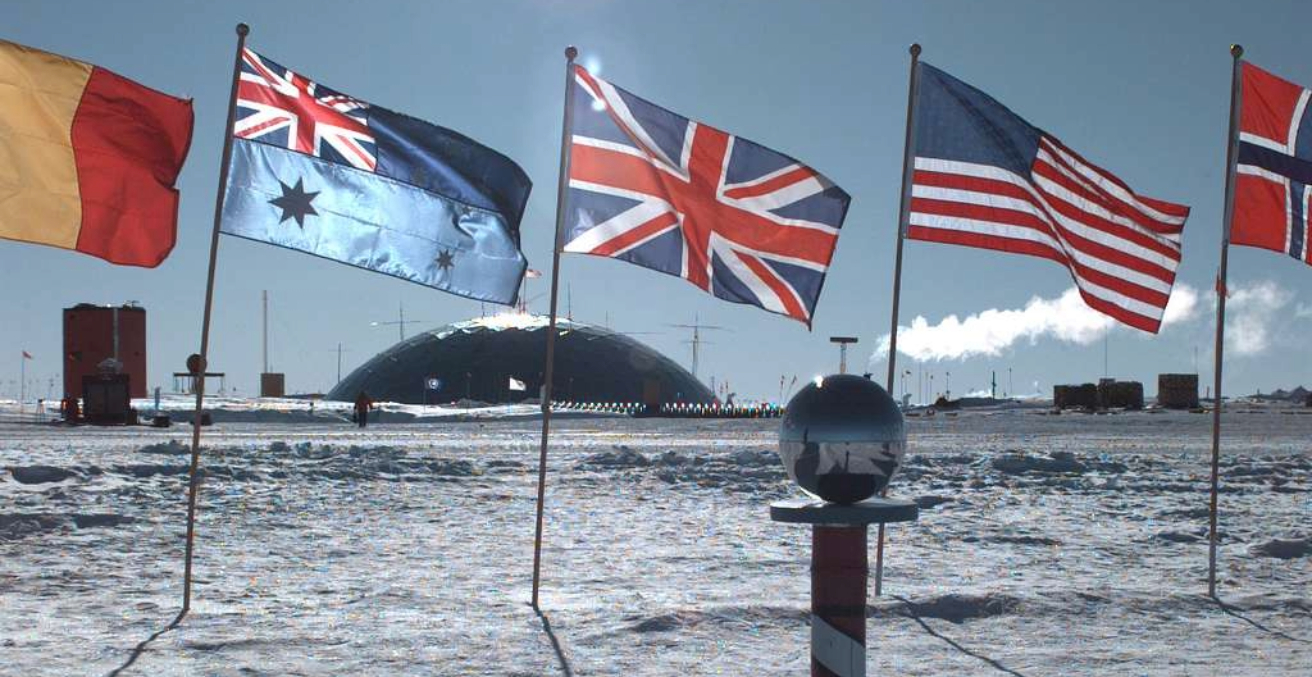Once dominated by the male “hero” of the exploration class, Antarctic exploration now boasts a growing scientific community of women researchers, photographers, journalists, and adventurers. While political, societal, an economic conditions are not as challenging as they were for the women pioneers, chellenges persist.
A woman’s place is in Antarctica – quite literally. Bradshaw Peak, Lake Chapman, Fricker Ice Piedmont, and Coyer Point are just some of the Antarctic place names that commemorate the outstanding scientific and geographic work women undertake in and around the continent. The 100 Polar Women project, curated by Women in Polar Science, profiles many other researchers, policymakers, guides, and other polar professionals. These inspiring women lead field teams, research labs, high-level delegations, and international Antarctic organisations. But Antarctica has not always been accessible for women, and in many cases barriers to women’s participation and success remain.
Antarctica has a short human history, and much of that history has been white and masculine – the word “Antarctica” often conjures up the image of the heroic figure striding out into the blizzard. During the Heroic Era (1899-1922), it was indeed men who headed south. That’s not to say women didn’t want to be in Antarctica. In 1904, paleobotanist Marie Stopes attempted to persuade Robert Falcon Scott to take her south on his next expedition – she had a particular interest in Antarctic fossils (plant fossils were eventually found in the vicinity of Scott’s body following his return from the South Pole). The oft-repeated story of the “three sporty girls” who applied to join Ernest Shackleton’s Imperial Trans-Antarctic Expedition (1914-1917) demonstrates interest in the far south was not limited to those with a scientific background. These writers proclaimed “we do not see why men should have all the glory, and women none,” pointing out that “there are women just as brave and capable as there are men.”
The first women to reach Antarctica were not only brave and capable, they were also married to men with interests in the Southern Ocean. The Norwegian Ingrid Christensen, whose husband Lars owned a whaling company, made four voyages south between 1931 and 1936. Her daughter and two friends also joined the final trip, which included a landing in the Antarctic mainland. Caroline Mikkelsen set foot on the Tryne Islands in 1935 during an expedition captained by her husband and sponsored by Lars Christensen. When the Americans Edith Ronne and Jennie Darlington wintered in 1948, they also did so in the capacity as wives. Darlington’s husband initially reacted to her request to come along with the assertion “there are some things women donʼt do. They donʼt become Pope or President – or go down to the Antarctic” – but he was persuaded otherwise.
Access to Antarctica for women scientists came later. While Maria Klenova from the Soviet Union conducted ship-based research around Antarctica in 1955 and 1956, the continent itself remained difficult to access. In March 1965, the US Admiral James R. Reedy confidently described Antarctica as “the womanless white continent of peace.” The American Lois Jones’ research team of five women conducted fieldwork in Antarctica 1969, though they captured headlines for another reason when they were among the first women to be flown to the geographic South Pole. Janet Thompson headed south of the Antarctic Circle with the British Antarctic Survey in 1983, but women did not winter over on the continental British station until the mid 1990s. Access was granted incrementally, and with conditions. In her memoir about being the first woman to be an Australian Antarctic Station leader in 1989, Diana Patterson details how she was advised to “think like a man” in order to succeed. A growing number of women did succeed in getting south and conducting important research, and by the late 1990s, fieldwork was finally a viable option for women in Antarctic research – but this didn’t mean all challenges disappeared.
Fieldwork plays an important role in gathering data about Antarctica and wider global systems. Going to Antarctica involves complex logistics and environmental planning – but women often face additional hurdles. The challenges that women face when working in the remote Antarctic environment range from the physical and logistical (including the availability of correct clothing sizes and navigating caring responsibilities) through to issues that are much more ingrained in wider social structures (these include gender bias, lack of opportunities or recognition, and sexual harassment). Some of these challenges can be easily addressed – for instance by providing a range of clothing sizes and hygiene products for those who menstruate in the field – but others are indicative of wider cultural issues.
Our 2017 survey of women who had worked with the Australian Antarctic Division found that over 60 percent of respondents reported experiencing sexual or gendered harassment during their time in Antarctica. In many cases, this harassment occurred with women in positions such as postdocs or field assistants – this contributed to a reluctance to report incidents as it could jeopardise a woman’s access to the continent in future. What happens in Antarctica doesn’t stay in Antarctica, and incidents can have wide-ranging and serious impacts on both the personal and working lives of those impacted once they return home.
While these challenges are not unique to the Antarctic context – the #MeTooSTEM group notes “women in STEM have the highest rate of sexual harassment of any profession outside the military” – working in a remote environment where access and communication are difficult heightens the risk. This was further highlighted by a 2022 US National Science Foundation (NSF) report that identified sexual harassment, stalking, and sexual assault as ongoing issues within the United States Antarctic Program, and the 2022 release of Professor Meredith Nash’s report into diversity, equity, and inclusion within the Australian Antarctic Program. Both reports pointed to ongoing issues around sexism and safety and spoke to the need for better training, reporting, and – ultimately – wider cultural change.
National Antarctic programs, logistics contractors, scientific communities, project leaders, and those working in the Antarctic sector have a role to play in ensuring that Antarctica is a safe work environment for everyone. This includes men and women, as well as people of all sexual orientations and cultural and economic backgrounds – taking an intersectional approach is key. So too is implementing change at a structural level. When something goes wrong, it should not be up to individuals to come forward on their own in order to effect change. Rather, institutions must take the lead by examining their own cultures and histories, and by ensuring that the power dynamics that are at play (between supervisors and students, for example) are clearly articulated, and appropriate behaviours explicitly spelled out. Cultural change also involves celebrating successes and making visible the wide range of people who make Antarctic research possible.
While Antarctica is no longer the sole preserve of able-bodied white male heroes, there is still a long way to go to ensure that the continent for peace and science truly is a place for us all.
Dr Hanne Nielsen is a Senior Lecturer in Antarctic Law and Governance at the the Institute for Marine and Antarctic Studies at The University of Tasmania. Her research focusses on human interactions with Antarctica, including polar tourism; Antarctica in the media; Literature of the far south; and Antarctica as a workplace.
This article is published under a Creative Commons License and may be republished with attribution.




